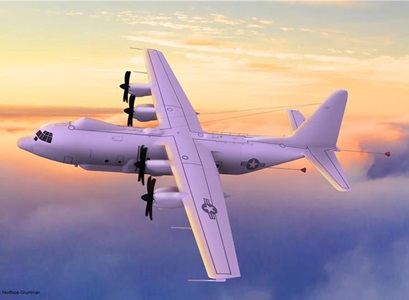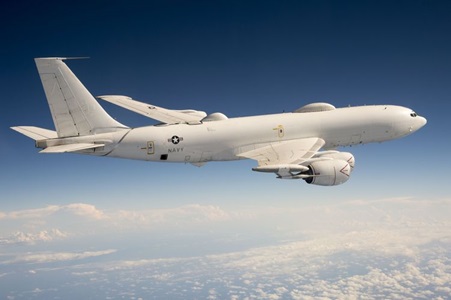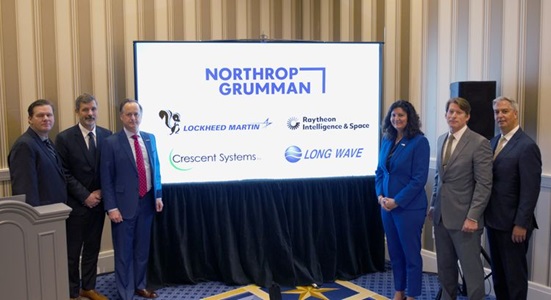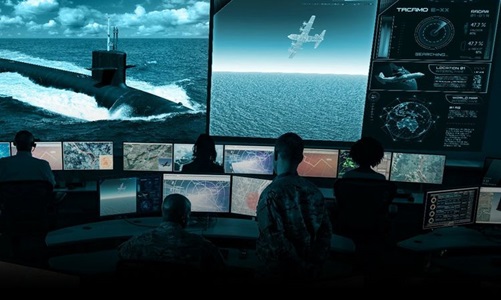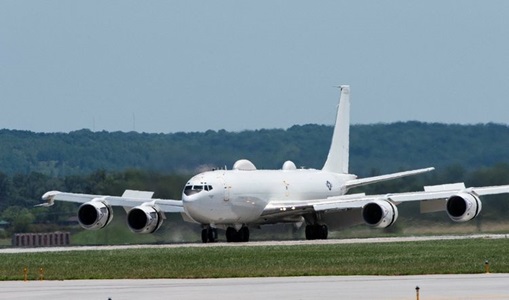Northrop Grumman will deliver the E-130J to relieve the U.S. Navy’s current E-6B Mercury fleet of the TACAMO mission.
E-130J TACAMO
Designed to maintain communications between U.S. decision-makers and the triad of strategic nuclear weapon delivery systems.


Northrop Grumman to Deliver US Navy’s E-130J TACAMO
Northrop Grumman has been selected as the prime contractor to deliver nuclear command, control and communications (NC3) aircraft for the U.S. Navy's Take Charge And Move Out (TACAMO) mission. The Northrop Grumman-led industry team will deliver the E-130J to relieve the U.S. Navy's current E-6B Mercury fleet of the TACAMO mission.
Take Charge and Move Out - TACAMO
TACAMO is a U.S. military system of survivable communications links designed to maintain communications between U.S. decision-makers and the triad of strategic weapon delivery systems.
E-6B Mercury Fleet
The U.S. Navy currently operates a fleet of E-6B Mercury aircraft that supports U.S. Strategic Command’s Airborne Command Post and the TACAMO VLF (Very Low Frequency) relay mission. The Navy will transfer the TACAMO mission to modernize this critical strategic deterrent mission and provide connectivity between the National Command Authority and ballistic submarines capable of delivering nuclear weapons.
Northrop Grumman has extensive weapons system integration and battle management expertise to deliver the U.S. Navy’s E-130J TACAMO weapon system alongside our industry team partners. We are excited to lead an industry team that includes Lockheed Martin Skunk Works®, Raytheon Intelligence and Space, Crescent Systems, Inc., and Long Wave Inc. Together, we will deliver critical nuclear command, control, and communications enterprise capabilities to the United States Navy.
Until the E-130J is fielded and ready, Northrop Grumman remains focused on providing the most relevant capabilities keeping the U.S. Navy mission ready by providing integrated modification and maintenance on the E-6B Mercury fleet at our Lake Charles site. Northrop Grumman performs modifications to the fleet improving command and control and communications functions in support of a mission that is critical for strategic deterrence.
